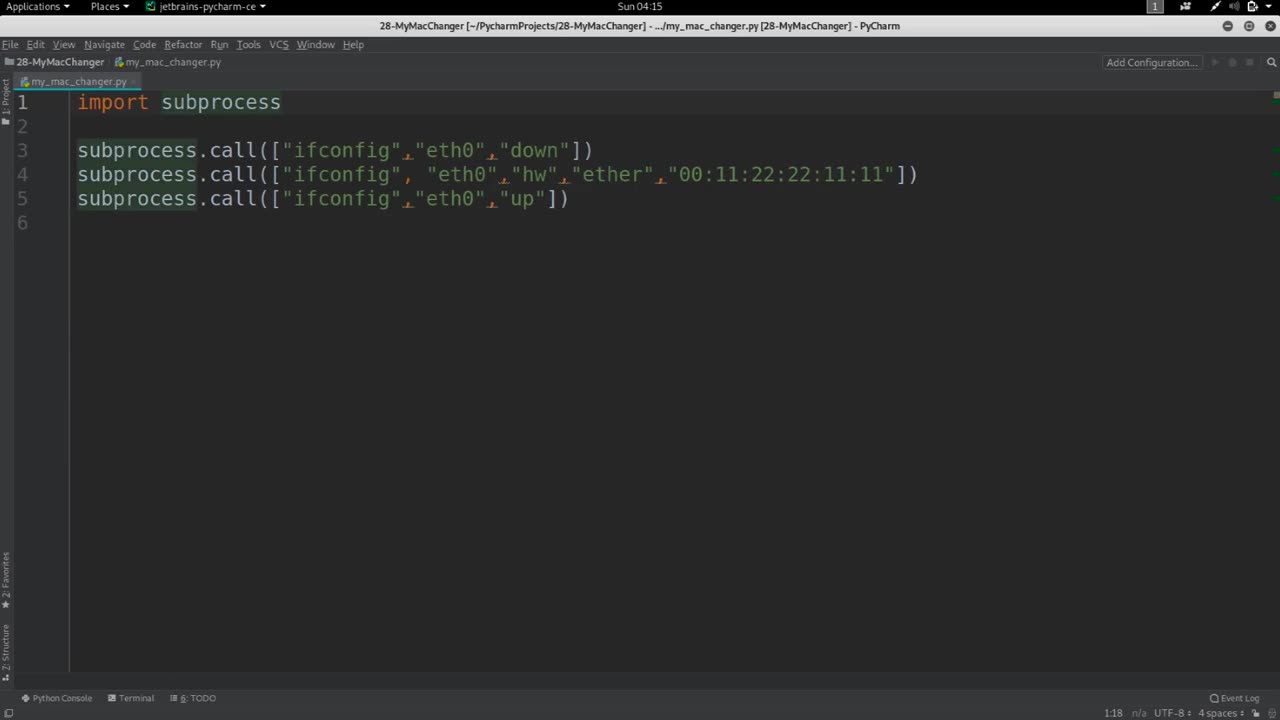Premium Only Content

Chapter-33, LEC-5 | How to Subprocess | #youtube #ethicalhacking #eduacation
#ethicalhacking #hacking #rumble #virel #trending #education
#ethicalhacking #hacking #rumble #virel #trending #education
Subscribe to our channel YouTube channel.❤️
/@thecybersecurityclassroom
Followe me on Rumble.💕
/@the1cybersequrityclassroom
#hacking #growthhacking #biohacking #ethicalhacking #lifehacking #whacking #hackingout #happyhacking #brainhacking #travelhacking #househacking #brainhackingum
In Python, the subprocess module allows you to spawn new processes, connect to their input/output/error pipes, and obtain their return codes. Here's how you can use the subprocess module in your Python code:
1. Import the subprocess module at the beginning of your Python script by adding the following line of code:
python Copy code
import subprocess
2. Call a command using the subprocess module by using the subprocess.run() function. For example, to run the ls command in the current directory, you would write the following code:
python Copy code
subprocess.run(["ls"])
The subprocess.run() function takes a list of arguments as its first parameter, where each argument is a string representing a command or a command-line option. In the example above, we pass the ls command as the argument.
3. You can also capture the output of the command by passing the capture_output=True argument to subprocess.run(). This will return a CompletedProcess object that contains the output of the command as a byte string. For example, to capture the output of the ls command in the current directory, you would write the following code:
python Copy code
result = subprocess.run(["ls"], capture_output=True)
print(result.stdout.decode())
The result variable will contain the CompletedProcess object, which you can use to obtain the output of the command using the stdout attribute. We decode the byte string to a string using the decode() method, and then print the output.
4. You can also pass input to the command using the input argument to subprocess.run(). For example, to pass the string "hello world" to the echo command, you would write the following code:
python Copy code
result = subprocess.run(["echo"], input=b"hello world\n", capture_output=True)
print(result.stdout.decode())
In this example, we pass the b"hello world\n" byte string as input to the echo command. The b prefix indicates that it is a byte string, and the \n character represents a newline.
These are just a few examples of how you can use the subprocess module in Python. The subprocess module offers many other functions and options for more advanced use cases.
Subscribe to our channel YouTube channel.❤️
/@thecybersecurityclassroom
Followe me on Rumble.💕
/@the1cybersequrityclassroom
-
 21:23
21:23
Neil McCoy-Ward
1 hour ago🔥 While You're Working Hard... They're Planning To Take EVERYTHING From You!!!
6.15K2 -
 2:13:37
2:13:37
Side Scrollers Podcast
5 hours agoTwitch CONTROVERSY Hit New Low + Reddit Mods QUIT + FireMAN is Now Sexist + More | Side Scrollers
66K5 -
 5:31
5:31
John Rich Official
13 days agoThe Righteous Hunter by John Rich
23.4K10 -
 59:51
59:51
Rebel News
3 hours agoEby threatens to block pipeline, Guilbeault out of cabinet, Land disputes continue | Rebel Roundup
24.7K4 -
 1:45:59
1:45:59
Robert Gouveia
5 hours agoAmerican Soldier DEAD! Trump Furious! Afghan 'Vetted by CIA'! Third World FREEZE!
48.9K36 -
 48:48
48:48
The Culture War with Tim Pool
4 hours agoThe West Is COLLAPSING Under Mass Migration | The Culture War's Across The Pond
35.7K66 -
 1:42:33
1:42:33
The Mel K Show
4 hours agoMORNINGS WITH MEL K - We Have Not Yet Begun to Fight - The Clock is Ticking! 11-28-25
29.3K14 -
 1:25:54
1:25:54
Film Threat
16 hours agoHOLLYWOOD FOR SALE! BLACK FRIDAY BLOW OUT! | Film Threat Livecast
17.4K2 -
 2:51:52
2:51:52
The Shannon Joy Show
5 hours agoSJ Show Nov 28 - The SJ Friday Matinee Watch Party With Commentary Featuring The Big Short!
16.8K -
 35:39
35:39
Grant Stinchfield
7 hours ago $2.67 earnedThe Medical Deep State Exposed — And McCullough Has the Receipts!
14K